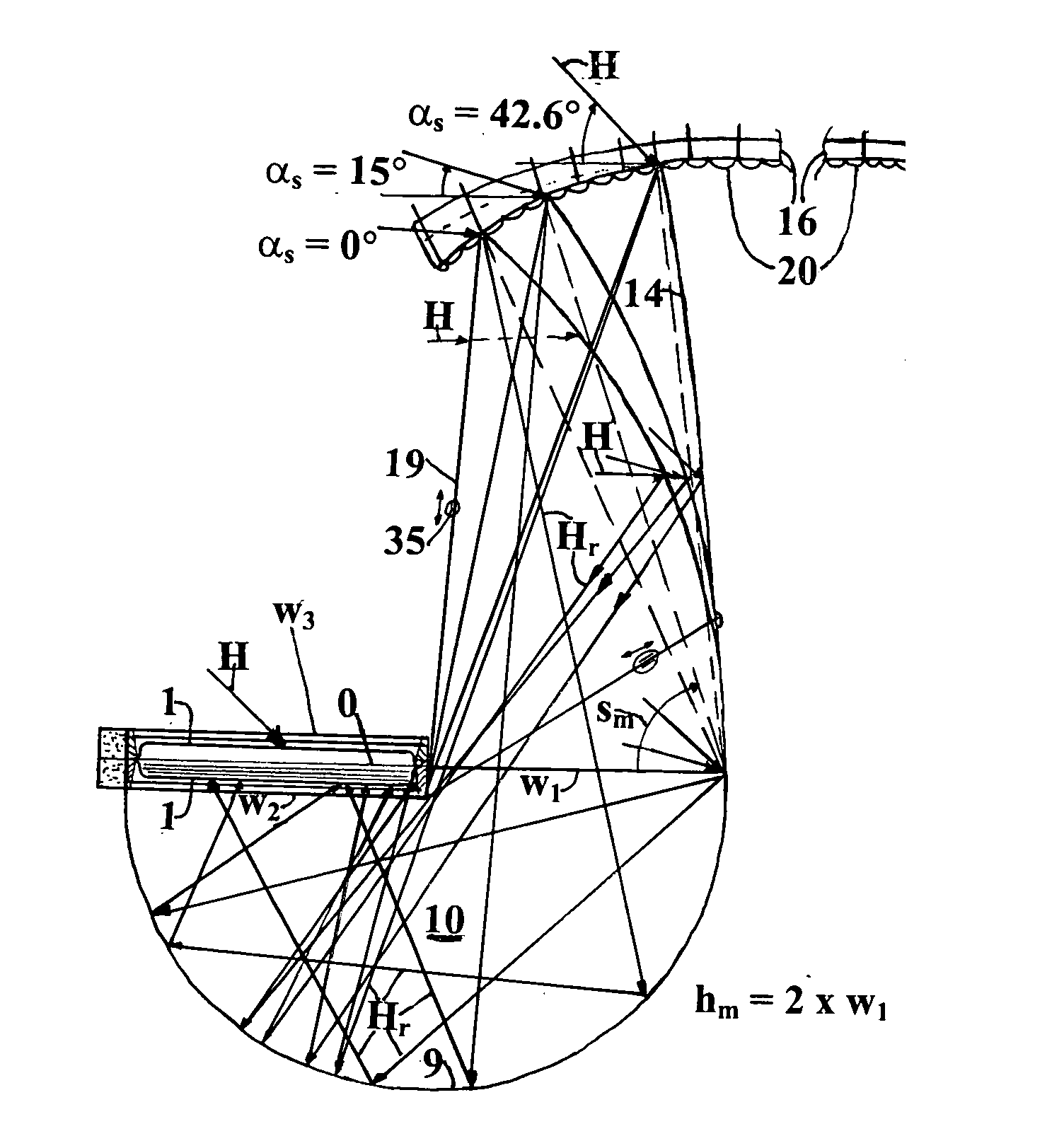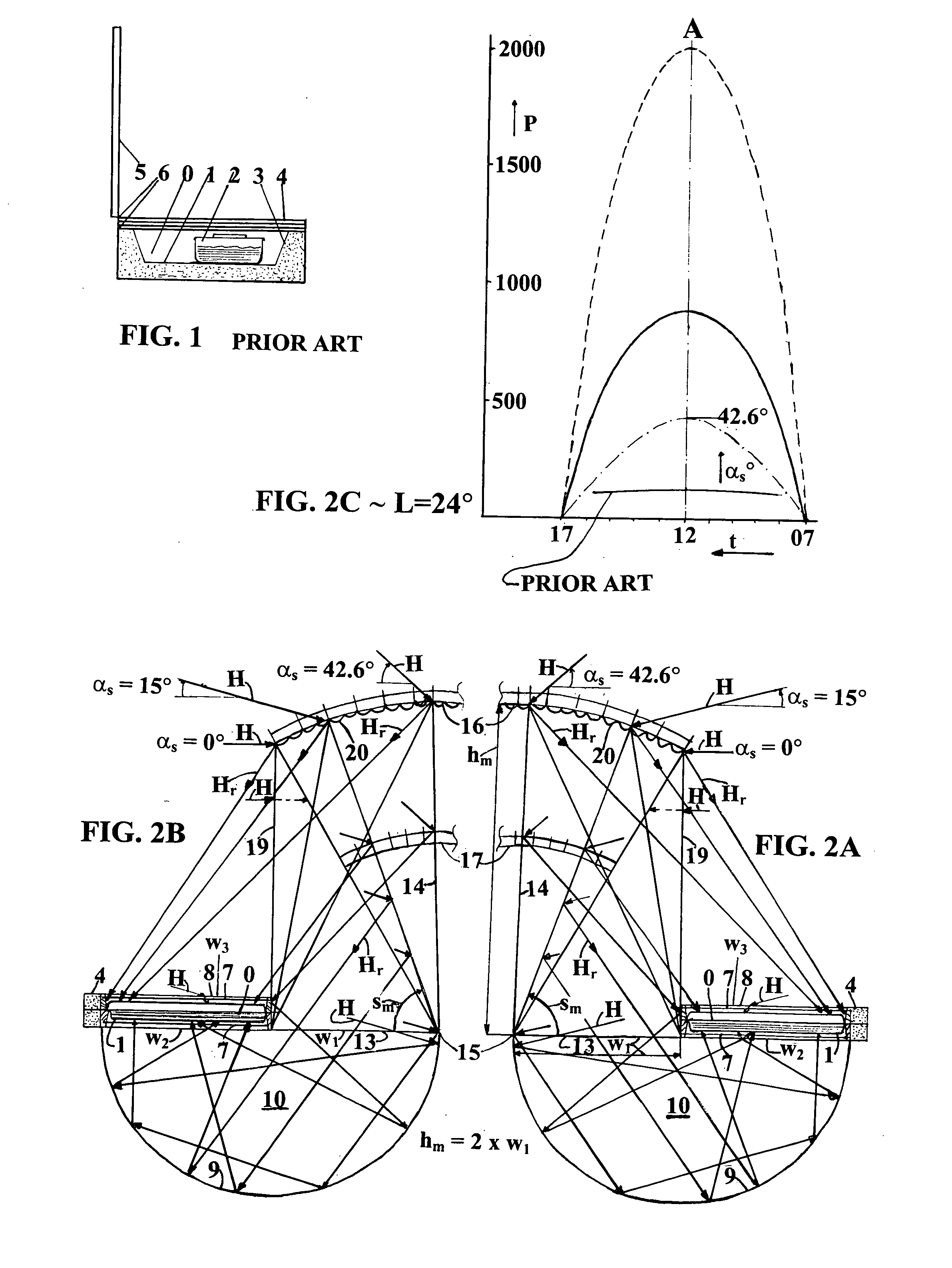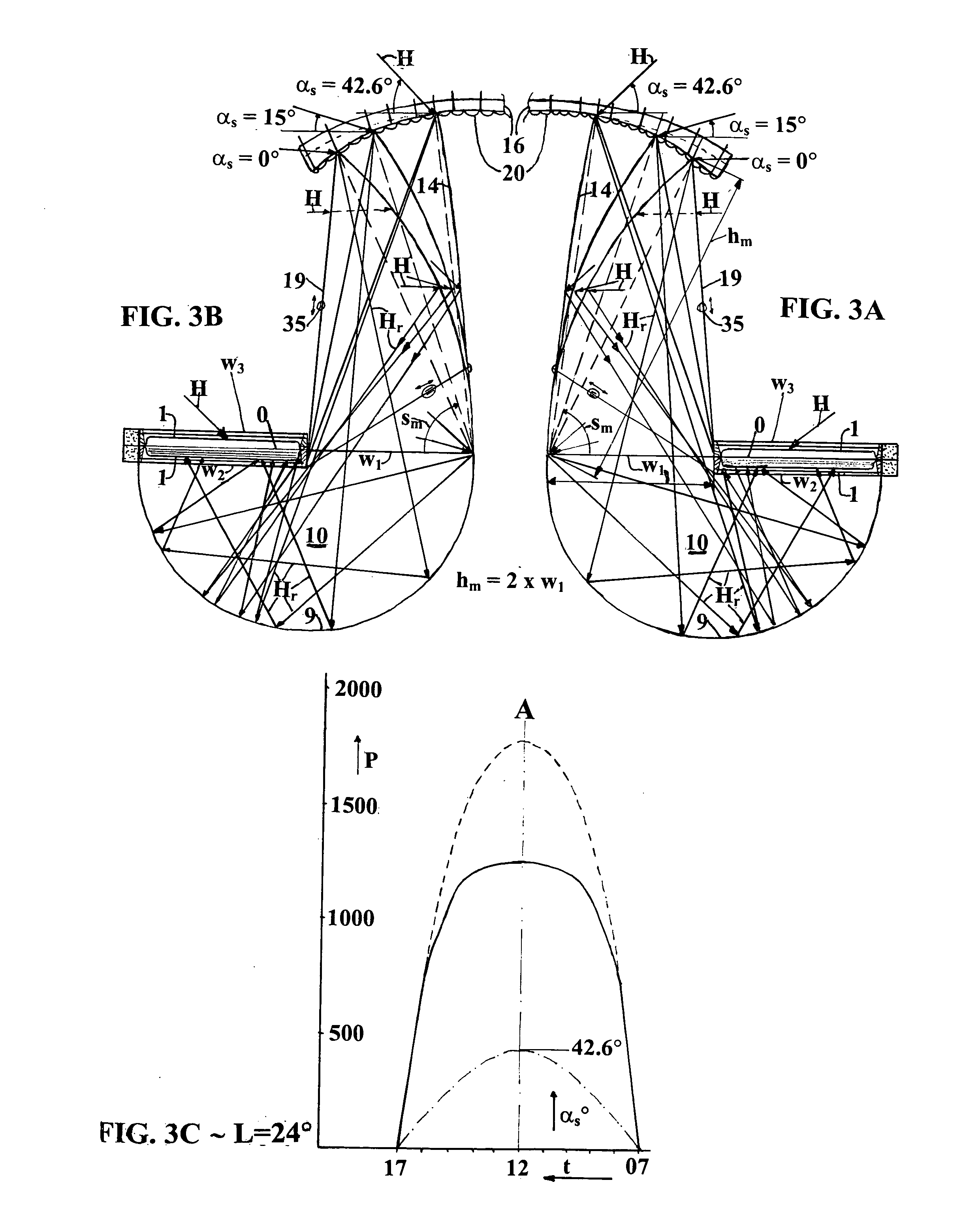Method and apparatus for achieving worldwide reduction of carbon dioxide emissions and deforestation
a carbon dioxide and deforestation technology, applied in the field of methods and apparatuses for achieving worldwide reduction of carbon dioxide emissions and deforestation, can solve the problems of poor cooking performance of hot box solar cookers according to the state-of-the-art, large angle of beam radiation incidence, and failure of pv cell modules for electricity generation to disclose or suggest a combination of pv cells and solar cookers. , to achieve the effect of improving heat conductivity, reducing the coefficient o
- Summary
- Abstract
- Description
- Claims
- Application Information
AI Technical Summary
Benefits of technology
Problems solved by technology
Method used
Image
Examples
working examples
[0279] Several embodiments were tested by the inventor in the Almeria area in Southern Spain in November 2003 for various cooking operations, for example in FIG. 24, a preferred embodiment suitable for windy environments is shown, incorporating two upper guide rails 16 supported by a stabilized upper structure 30 with tie-rods 30 for maintaining optimum mirror guide rail profile 20 position in relation to said mirror hinge line 15 and fine (one degree) tuning of mirror tilt angle, said preferred embodiment as shown in FIG. 24, having three cooking trays with top insulation, bendable mirror surface area 1.35 m.times.0.625 m, first window area 0.45 m.times.0.625 m, trays area three times 0.35 m.times.0.20 m. was tested for cooking foods such as: cooking of brunch consisting of fried eggs, fried bacon and fried tomatoes. In tray 1: fried eggs for three persons, in tray 2: fried bacon for three persons, in tray 3: fried tomatoes for three persons. Said food items were fried in 20 grams ...
PUM
 Login to View More
Login to View More Abstract
Description
Claims
Application Information
 Login to View More
Login to View More - R&D
- Intellectual Property
- Life Sciences
- Materials
- Tech Scout
- Unparalleled Data Quality
- Higher Quality Content
- 60% Fewer Hallucinations
Browse by: Latest US Patents, China's latest patents, Technical Efficacy Thesaurus, Application Domain, Technology Topic, Popular Technical Reports.
© 2025 PatSnap. All rights reserved.Legal|Privacy policy|Modern Slavery Act Transparency Statement|Sitemap|About US| Contact US: help@patsnap.com



